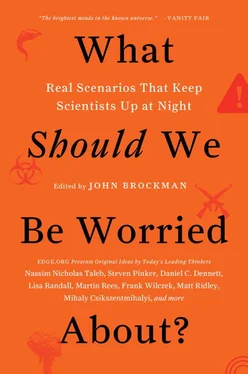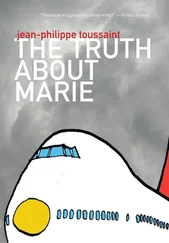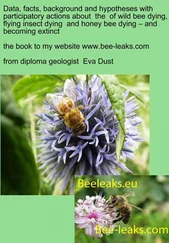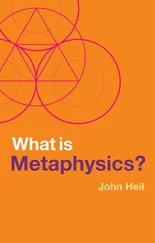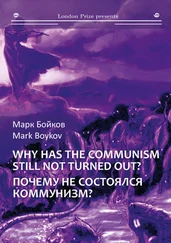SEIRIAN SUMNER
Senior lecturer, School of Biological Sciences, University of Bristol
Synthetic biology is Legoland for natural scientists. We take nature’s building blocks apart and piece them back together again in a way that suits us better. We can combine genetic functions to reprogram new biological pathways with predictable behaviors. We spent the last decade imagining how this will improve society and the environment. We are now realizing these dreams. We can make yogurt that mops up cholera; we can manufacture yeast to power our cars; we can engineer microorganisms to clean up our environment. Soon we’ll be using living organisms to mimic electrical engineering solutions—biocomputers programmed to follow logic gates just as computers do. We will have materials stronger than steel, made from animal products. Could this be the end of landfill? There’s no doubt that synthetic biology will revolutionize our lives in the 21st century.
I worry about where synthetic biology is going next, and specifically what happens when it gets out of the lab into the natural world and the public domain.
Biological engineering started outside the lab; we’ve been modifying plants and animals since the advent of agriculture, about 12,000 years ago, through breeding and artificial selection for domestication. We’ve ensnared yeast and bacteria to make beer, wine, and cheese; we’ve tamed wolves to be man’s best friend; we’ve cajoled grass into being a high nutrient source. Synthetic biology is a new packaging that describes how we’ve got an awful lot better at manipulating natural systems to suit our whims. A “plug and play” approach is being developed (e.g., BioBricks) to facilitate manipulations at the molecular level. In the future, tried and tested genetic modules may be slotted together by nonexperts to create their own bioengineered product. Our children’s children could be getting Bio-Lego for Christmas to build their own synthetic pets!
Synthetic biology has tremendous commercial potential (beyond the Lego) and is estimated to be worth over $10 billion by 2016. Currently, progress is focused on small things, like individual gene networks or microorganisms. But there is potential, too, for the larger, more charismatic organisms—specifically, the fluffy or endangered ones. These species capture the interests of the public, business, and entrepreneurs. This is what I am worried about.
We can make a new whole organism from a single stem cell (e.g., Dolly & Co.). We can uncover the genome sequence, complete with epigenetic programming instructions, for practically any extant organism within a few weeks. With this toolkit, we could potentially re-create any living organism on the planet; animal populations on the brink of extinction could be restocked with better, hardier forms. We are a stone’s throw away from re-creating extinct organisms.
The woolly mammoth genome was sequenced in 2008, and Japanese researchers are reputedly cloning it now, using extant elephant relatives as surrogate mothers. Synthetic biology makes resurrecting extinct animals much more achievable, because any missing genomic information can be replaced with a plug-and-play genetic module. A contained collection of resurrected animals is certainly a Wow-factor, and it might help uncover their secret lives and explain why they went extinct. But as Hollywood tells us, even a Jurassic Park cannot be contained for long.
There are already attempts to re-create ancient ecosystems through the reintroduction of the descendants of extinct megafauna (e.g., Pleistocene Park, in Russia), and synthetic woolly mammoths may complete the set. Could synthetic biology be used to resurrect species that “fit better” or present less of a threat to humans? A friendly mammoth perhaps? Extinct, extant, friendly, or fierce, I worry about the consequences of biosynthetic aliens being introduced into a naïve and vulnerable environment, becoming invasive, and devastating native ecosystems. I worry that if we can re-create any animal, why should we bother conserving any in the first place?
Synthetic biology is currently tightly regulated, along the same lines as genetically modified organisms (GMOs). But when biosynthetic products overflow into the natural world, it will be harder to keep control. Let’s look at this from the molecular level, which arguably we have more control over than the organism level or the ecosystem level. We can shuffle genes or whole genomes to create something that nature did not get around to creating. But a biological unit does not exist in isolation: Genes, protein complexes, and cells all function in modules—a composite of units, finely tuned by evolution in a changeable environment to work together.
Modules may be swapped around, allowing plasticity in a system. But there are rules to “rewiring.” Synthetic biology relies on a good understanding of these rules. Do we really understand the molecular rules enough to risk releasing our synthetic creations into natural ecosystems? We barely understand the epigenetic processes that regulate cell differentiation in model organisms in controlled lab conditions. How do we deal with the epigenome in a synthetic genome, especially one destined to exist in an environment very different from its original one 10,000 years ago?
Ecology is the Play-Doh of evolution: Ecosystem components get pushed and pulled, changing form, function, and relationships. We might be able to create a biounit that looks perfect and performs perfectly in the lab, but we cannot control how ecology and evolution might rewire our synthetic unit in an ecosystem, nor can we predict how that synthetic unit might rewire the ecosystem and its inhabitants. Molecular control mechanisms are engineered into the microorganisms we use to clean up toxic spills in the environment, preventing them from evolving and spreading. Can we put a “Stop evolving” switch into a more complex organism? How do we know that it won’t evolve around such a switch? And what happens if (when) such organisms interbreed with native species? What the disruption of the engineered modules, or their transfer to other organisms, might lead to is unimaginable.
To sum up, I worry about the natural world becoming naturally unnatural.
TIMO HANNAY
Managing director, Digital Science; former director, Nature.com; co-organizer, Sci Foo
In an episode of the 1980s British TV series Tales of the Unexpected , an amateur botanist discovers that plants emit agonized screams when pruned, though at frequencies well beyond human hearing. So overcome is he with sympathy for this suffering vegetation, and so apparently bizarre his demands that a local doctor give medical attention to his trees, that he is quickly packed off to an asylum.
A preposterous flight of fancy from Roald Dahl’s ever fertile imagination? No doubt. But this conceit also raises a profoundly serious point: We have next to no idea which things in the world around us are conscious and which are not.
This might seem like an abstract philosophical issue, but on the contrary, consciousness is the substrate of all suffering and pleasure and thus the mediator of everything truly important to us. If there were no subjective experience, there would be no such things as kindness, love, or joy. However sublime our universe, it would be inconsequential without a consciousness to perceive it. True, in a world with no subjective experience there would also be no cruelty, pain, or worrying (including that of the kind I am doing now). But this is precisely the point: How are we to maximize happiness and minimize suffering if we do not reliably know where and when they can exist?
Our usual rule of thumb for the presence of consciousness is to assess, based on superficial cues, how similar to ourselves something appears to be. Thus a dog is more conscious than a duck, which in turn is more conscious than a daffodil. But our intuitions about so many things—from the motions of celestial objects to the likelihood of winning the lottery—are so often wrong that we are foolish to rely on them for something as important as the ultimate source of all joy and strife.
Читать дальше
